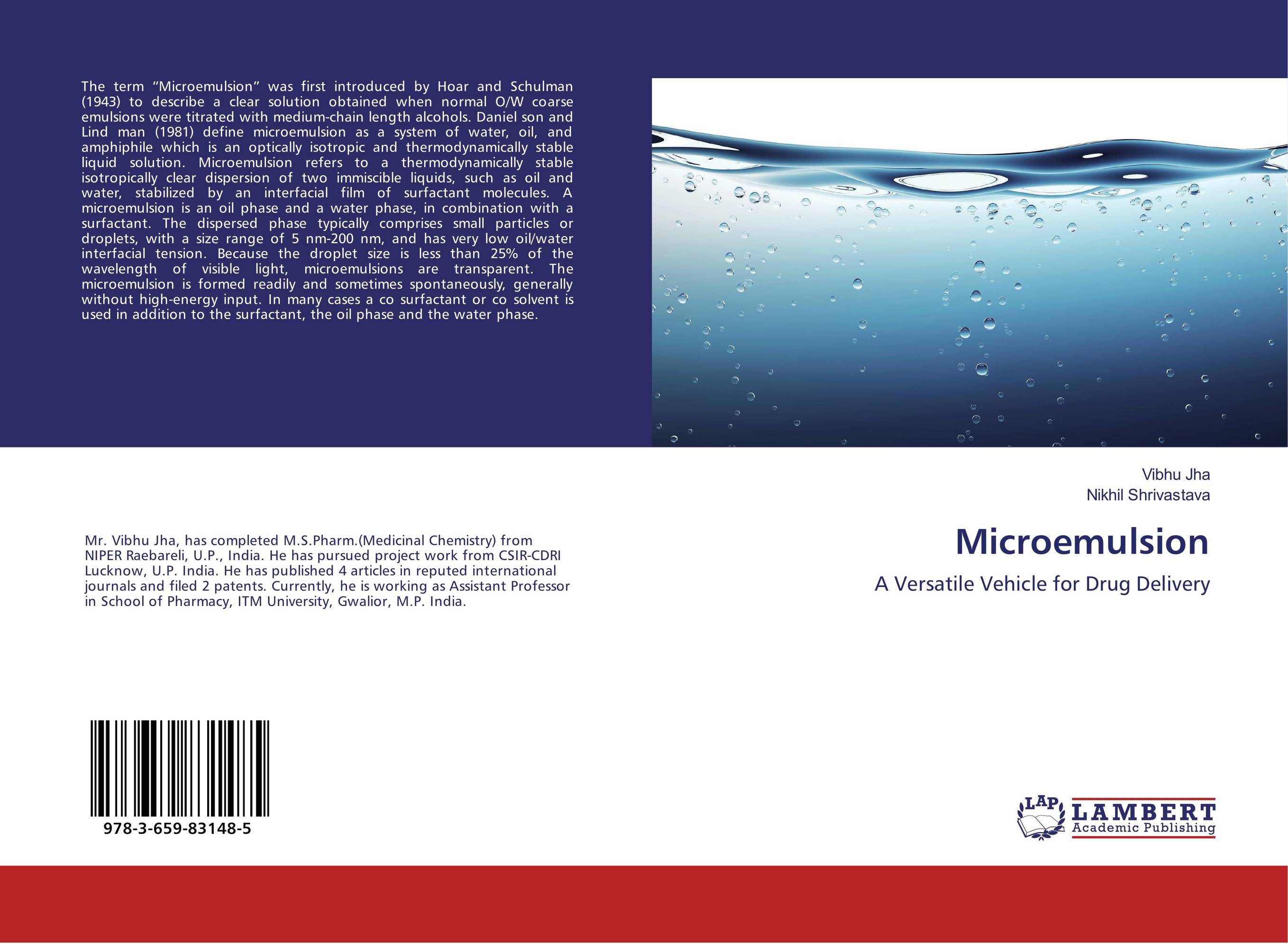| Поиск по каталогу |
|
(строгое соответствие)
|
- Профессиональная
- Научно-популярная
- Художественная
- Публицистика
- Детская
- Искусство
- Хобби, семья, дом
- Спорт
- Путеводители
- Блокноты, тетради, открытки
Microemulsion. A Versatile Vehicle for Drug Delivery

В наличии
| Местонахождение: Алматы | Состояние экземпляра: новый |

Бумажная
версия
версия
Автор: Vibhu Jha and Nikhil Shrivastava
ISBN: 9783659831485
Год издания: 2016
Формат книги: 60×90/16 (145×215 мм)
Количество страниц: 60
Издательство: LAP LAMBERT Academic Publishing
Цена: 21272 тг
Положить в корзину
| Способы доставки в город Алматы * комплектация (срок до отгрузки) не более 2 рабочих дней |
| Самовывоз из города Алматы (пункты самовывоза партнёра CDEK) |
| Курьерская доставка CDEK из города Москва |
| Доставка Почтой России из города Москва |
Аннотация: The term “Microemulsion” was first introduced by Hoar and Schulman (1943) to describe a clear solution obtained when normal O/W coarse emulsions were titrated with medium-chain length alcohols. Daniel son and Lind man (1981) define microemulsion as a system of water, oil, and amphiphile which is an optically isotropic and thermodynamically stable liquid solution. Microemulsion refers to a thermodynamically stable isotropically clear dispersion of two immiscible liquids, such as oil and water, stabilized by an interfacial film of surfactant molecules. A microemulsion is an oil phase and a water phase, in combination with a surfactant. The dispersed phase typically comprises small particles or droplets, with a size range of 5 nm-200 nm, and has very low oil/water interfacial tension. Because the droplet size is less than 25% of the wavelength of visible light, microemulsions are transparent. The microemulsion is formed readily and sometimes spontaneously, generally without high-energy input. In many cases a co surfactant or co solvent is used in addition to the surfactant, the oil phase and the water phase.
Ключевые слова: applications, dosage form, evaluation, Microemulsion, NDDS, pharmaceutics, mechanism of microemulsion formation



